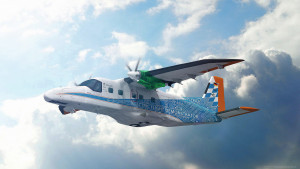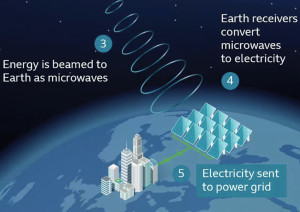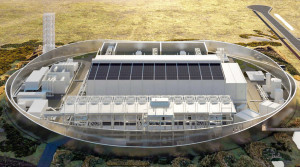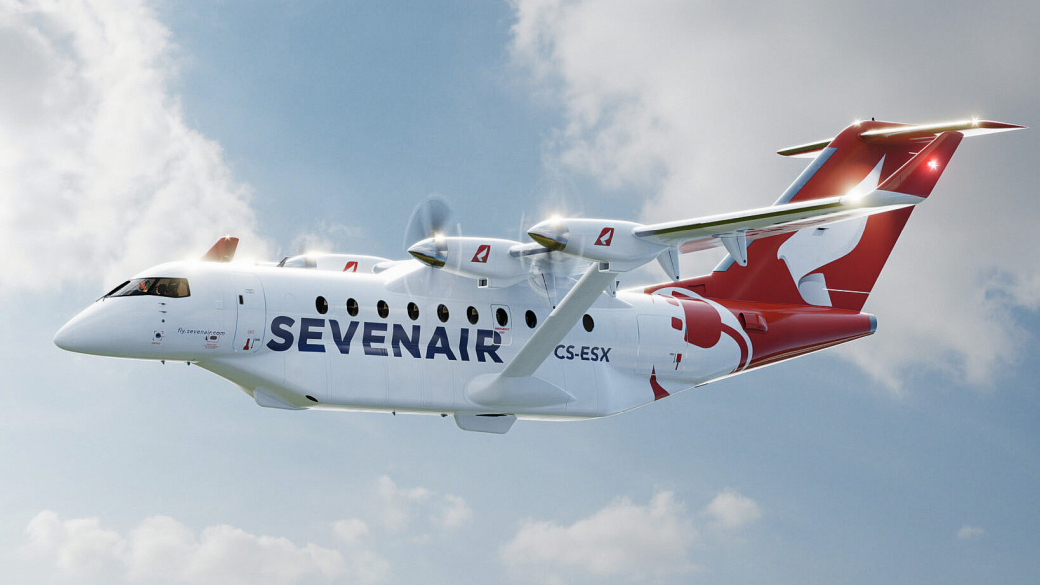2022 - End of the year - A look back
In a few days' time, most of us will be relaxing with family and friends and, perhaps over a glass of mulled wine, looking back on 2022. It was certainly an annus horribilis for most of us, with the coronavirus, the war in Ukraine, inflation of around 10% and energy costs that have risen fourfold. But there were also bright spots. The coronavirus epidemic is slowly disappearing (although apparently not in China, the country where it started). We remember that a small German company, Biontech, played a key role in the development of an effective vaccine. In Europe and the USA, vaccine production facilities were expanded in 2022 so that we can respond more quickly in the event of a new pandemic. And the war in Ukraine has taught us some bitter lessons, most notably how wrong it was to make us so dependent on Russian natural gas (and to a lesser extent Russian oil and coal).
When Chancellor Kohl retired, we still heard news about him from time to time. In contrast, Mrs. Merkel has almost disappeared from the public eye. By the beginning of 2022, Germany - like most other European countries - had slowly gone 'green'. But thanks to Mr. Putin's energy blackmail, we now have two reasons instead of just one to reduce our consumption of fossil fuels. In 2022, many people have also changed their minds about nuclear power and realized that it can be beneficial. The war in Ukraine has taught us further lessons. We have seen the US offer tremendous support to the brave Ukrainians, both militarily and financially - they have been a true friend. In contrast, France and especially Italy have provided very little - in Italy's case almost nothing. We have heard brave words from President Macron - but little substance. For military experts, the war in Ukraine was a great learning experience, a huge laboratory experiment. They have seen how even modern tanks have been destroyed by relatively inexpensive one-man shoulder-fired missiles. And of course the widespread use of drones, both for reconnaissance and as weapons platforms. Russia is believed to have bought over 1000 Iranian "Shahed" drones, which cost around 20,000 euros each. They fly slowly and the Ukrainians claim to have shot down around 60% of them. However, the remaining 40% have caused serious damage. Ukraine has also developed - and successfully deployed - "drone boats". These are about 4 m long, remote-controlled, have a range of hundreds of kilometers and carry an explosive charge.
There is no question that the war in Ukraine has changed the pattern of future conflicts. The war has had a significant economic impact as many countries, including Germany, have greatly increased their military spending. Germany has greatly increased its military budget and German industry has already benefited and will continue to do so. Our industry will also gain new, military-oriented customers. The economic "landscape" has changed. Many companies that used to be active in Russia have withdrawn - and thus suffered a loss of income. The Russian economy is said to have shrunk by at least 5% and many Western products are now missing from the shelves of Russian stores. Last but not least, there are said to have been around 100,000 deaths and serious injuries in both Russia and Ukraine.
The year 2022 has also brought many other changes. Thanks to the pandemic, online shopping has increased significantly, although there has been a slight return to the high street in recent months. The pandemic has also led to a huge increase in home office working, and it is now clear that this will become at least partially a permanent part of working life for many employees, in most cases the so-called "hybrid" model - 3 days at home, two days in the office or vice versa. Does working from home affect productivity? Many reports suggest that it does not.
In November, the Cop27 climate conference took place in Egypt. Last year it was in Scotland. However, the Egyptian meeting revealed a whole new agenda. In terms of agreements to reduceCO2 emissions, the Egyptian meeting was largely seen as a failure as very little was achieved. But - for the first time - we saw a big new issue. It was about reparation payments from the rich industrialized countries to the poor third world countries suffering from climate change. I believe this will be a real "Pandora's box" and will discuss it further next month. I believe that 2023 can only be better - and let's hope so!
Green aviation
According to the journal Atmospheric Environment (January 2021 issue), commercial aviation contributes about 3.5% to "anthropogenic warming", mainly throughCO2 emissions, but also through soot and sulphate emissions, and this proportion is expected to increase significantly over the next ten years. It is clear that, as with land transportation (roads and railways), "green aviation" needs to be developed.
Battery-powered aircraft
Air Canada recently became the latest airline to commit to new, zero-emission technology, ordering 30 battery-powered passenger aircraft from Swedish company Heart Aerospace. United Airlines and regional carrier Mesa Airlines each ordered 100 of Heart Aerospace's ES-30, a 30-passenger electric regional jet, last summer. Figure 1 shows the ES-30.
At the moment, these electric aircraft under development are still small and can only seat up to 30 passengers. And they can't fly far - Heart Aerospace's plane, powered by more than 5 tons of lithium-ion batteries on board, can only fly 200 km on a single charge. However, with the help of a gasoline-powered generator, it can increase its range to almost 800 km, reducingCO2 emissions by up to 50%. Nevertheless, the use of this technology is limited.
Aircraft with fuel cell propulsion
 Fig. 2: Dornier 228 aircraft with fuel cell propulsion (Photo: DLR/Hendrik)ZeroAvia is one of several aviation companies developing hydrogen-powered aircraft with fuel cell propulsion and has begun flight testing its hydrogen-electric powertrain with the Dornier-228 test aircraft as part of the HyFlyer II project (Fig. 2). The aim is to deliver a fully certified aircraft with an output of 600 kW and 19 seats by 2024. ZeroAvia is being supported by the British government. The company plans to expand its technology to aircraft with 40 to 80 seats by 2026. Ground testing of prototypes of the 1.8 megawatt power plant will begin this year. Like Heart Aerospace, ZeroAvia also has plans for a hybrid aircraft with combined fuel cell and conventional engines. ZeroAvia is also developing the technology to convert existing aircraft for fuel cell operation.
Fig. 2: Dornier 228 aircraft with fuel cell propulsion (Photo: DLR/Hendrik)ZeroAvia is one of several aviation companies developing hydrogen-powered aircraft with fuel cell propulsion and has begun flight testing its hydrogen-electric powertrain with the Dornier-228 test aircraft as part of the HyFlyer II project (Fig. 2). The aim is to deliver a fully certified aircraft with an output of 600 kW and 19 seats by 2024. ZeroAvia is being supported by the British government. The company plans to expand its technology to aircraft with 40 to 80 seats by 2026. Ground testing of prototypes of the 1.8 megawatt power plant will begin this year. Like Heart Aerospace, ZeroAvia also has plans for a hybrid aircraft with combined fuel cell and conventional engines. ZeroAvia is also developing the technology to convert existing aircraft for fuel cell operation.
Hydrogen-powered gas turbine engines
At the end of November, Rolls-Royce tested a hydrogen-powered gas turbine, apparently for the first time in the world. The engine itself was almost entirely conventional, a Rolls-Royce AE-2100A gas turbine, a design widely used in regional aircraft around the world. The tests are being carried out by Rolls-Royce following development work in Derby and in partnership with the airline easyJet. Until now, the gas turbine has only been operated at low speeds. However, Rolls-Royce engineers point out that hydrogen, even when liquefied at very low temperatures, still takes up around 4 times the volume of the equivalent amount of kerosene and would therefore require significant changes to the shape of the aircraft body.
Sustainable aviation fuels
The final option for "green" aviation is the use of so-called sustainable aviation fuels (SAF). These are organic compounds produced from plant sources. The whole concept is highly controversial, as there are fears that it will reduce agricultural food production. In the past, sugar cane plants were converted into fuels in Latin America. The technology was problem-free - but the project was stopped for "political" reasons. For this reason, all new projects to produce SAF are based on organic waste, emphasizing that they are not at the expense of food production. But is there enough organic waste to meet the demand for fuel?
In the UK, the Fastacejet project is focusing on two viable processes - fastjet and acejet - for the production of SAF. The Fastjet process produces fatty acids through a two-stage fermentation process - chemolithotrophic fermentation of H2 andCO2 to produce an intermediate organic acid which acts as a feedstock for the subsequent fermentation of oleaginous yeasts. The Acejet pathway produces an aldehyde as a platform chemical from waste or excess H2 andCO2 in chemolithotrophic fermentation. Both fermentation products are then upgraded to SAF products by chemo-catalytic processes. Within the project, both processes, whose feasibility has already been demonstrated on a laboratory scale, will be optimized to produce fuel samples, evaluate their physico-chemical properties and their suitability as aviation fuel and carry out a more detailed techno-economic modelling of the processes. Conclusion: Within the next 10 years we will see the first commercial electric aircraft - "green aviation". But green long-haul and intercontinental flights are still little more than a dream.
Solar energy on a gigawatt scale
 Fig. 3: Conceptual image of a solar park in spaceSolar panels, usually mounted on a roof, are a common sight. It is rarer to see large solar farms with entire fields covered with solar cells. But the ESA (European Space Agency) is now looking into the possibility of GigaWatt-scale solar installations in space. The "Solaris" project is to begin with a three-year study to determine whether huge solar farms in space could work and be cost-effective. The ultimate goal is huge satellites in orbit, each capable of generating 1 to 2 gigawatts. ESA Director General Josef Aschbacher is convinced that solar energy from space could make an "enormous" contribution to solving future energy shortages. According to Aschbacher, "we need to transform ourselves into a carbon-neutral economy and therefore change the way we generate energy and, in particular, reduce the proportion of fossil fuels in our energy production. If we can do that from space, and I say if we could - because we're not there yet - that would be fantastic and would solve a lot of problems.
Fig. 3: Conceptual image of a solar park in spaceSolar panels, usually mounted on a roof, are a common sight. It is rarer to see large solar farms with entire fields covered with solar cells. But the ESA (European Space Agency) is now looking into the possibility of GigaWatt-scale solar installations in space. The "Solaris" project is to begin with a three-year study to determine whether huge solar farms in space could work and be cost-effective. The ultimate goal is huge satellites in orbit, each capable of generating 1 to 2 gigawatts. ESA Director General Josef Aschbacher is convinced that solar energy from space could make an "enormous" contribution to solving future energy shortages. According to Aschbacher, "we need to transform ourselves into a carbon-neutral economy and therefore change the way we generate energy and, in particular, reduce the proportion of fossil fuels in our energy production. If we can do that from space, and I say if we could - because we're not there yet - that would be fantastic and would solve a lot of problems.
Satellites with solar panels would have to be about 1.7 km long - more than twice the size of the world's tallest building and an order of magnitude larger than the current largest structure in space, the International Space Station at 110 meters. The sun's energy can be captured much more efficiently in space, as there is no night or clouds. The idea has been around for over 50 years, but it has been too difficult and too expensive to implement - until now. Figure 3 shows the concept.
What has changed now is the drastically reduced cost of launches, thanks to reusable rockets and other innovations developed by the private sector. But there have also been advances in building robots in space and developing technologies to transmit electricity wirelessly from space to Earth.
The European Space Agency (ESA) is seeking funding from its member states for a research program called Solaris, which aims to test whether these developments will make it possible to generate solar power from space reliably and cheaply enough to be commercially viable.
One of the main focuses of the Solaris program is the question of whether it is possible to transfer solar energy collected in space to the power grids on Earth. Of course, this cannot be done via an extremely long cable, but must be done wirelessly via microwave beams. The Solaris team has already shown that it is possible in principle to transmit electricity safely and efficiently wirelessly.
In September, engineers at Airbus in Munich wirelessly transmitted 2KW of electricity from solar cells to collectors more than 30 meters away. It will be a big step to transmit electricity on the scale of many gigawatts over thousands of kilometers, but according to Jean Dominique Coste, Senior Manager for Airbus-Blue-Sky, this could be achieved in a series of small steps. "Our team of scientists has found no technical obstacles to space-based solar power," he said.
Emrod(https://emrod.energy), the company that developed the wireless transmission system, says the technology is safe. "Nothing is fried," it says. "The power of the beam is spread over such a wide area that even at the highest intensity in the center of the beam, there is no danger to animals or humans." The US, China and Japan are also well advanced in the race to develop space-based solar power and are expected to announce their own plans shortly. Independently of the ESA proposal, another company, Space Solar(www.spacesolar.co.uk), has been established. Its aim is to demonstrate how to beam electricity from space within six years and to do so commercially within nine years. I'll just add one comment: the production of solar cells is a branch of surface technology. That could be good news for our industry.
Energy storage
The problem with most renewable energy sources is that they don't work around the clock. That's why more and more solar installations are now being linked to a battery, both domestically and in larger installations, for example in Australia. And in almost all cases, these are lithium batteries. But, if weight and energy density are not important - could there be a more cost-effective option? Sodium-ion batteries are one possible answer. But another technology has recently been announced. Google's parent company Alphabet is betting on salt and antifreeze for energy storage, which could be cheaper than lithium-ion batteries. Alphabet's secretive X division is working on a potentially cheaper alternative.
The new technology was developed by Robert Laughlin, a Nobel Prize-winning physicist at Stanford University. It takes energy in the form of electricity and converts it into hot and cold air using a heat pump. These streams heat the molten salt and cool the antifreeze respectively. The process can be reversed to release the energy when the hot and cold air meet, creating compressed air that drives a turbine and feeds the electricity back into the grid. Scientists had already shown that the technology can store energy. However, Alphabet engineers have developed a version that works at lower temperatures, reducing costs and making the technology commercially viable. Although the system's turbines and heat exchangers require custom fabrication, most of the technology is not expensive. Steel tanks, air and cooling fluids are easy to obtain. Salt (sodium chloride) is cheap and plentiful and can be used again and again to store heat without decomposing or releasing toxic by-products. The salt tanks can be charged and recharged thousands of times, for up to 40 years - three times longer than other options. The size of the system can be the size of a garage or a large power plant. We need energy storage - but batteries may not be the only option.
E-bikes for everyone
 Fig. 4: Skarper electric motor on a bicycleE-bikesare nothing new. Ogden Bolton Jr. received the first US patent for one in 1895. His battery-powered bicycle had a hub motor mounted in the rear wheel, while the battery was attached to the crossbar. Two years later, Hosea W. Libbey in Boston invented an electric bicycle powered by a motor mounted in the hub of the pedal crank axle. Today, e-bikes are a multi-billion dollar business. They can be divided into two categories. There is the ex-novo e-bike and there are kits that allow you to convert a simple bike into an e-bike. Most of these conversion kits require a completely new bike with a built-in motor to replace the existing bike. But now there is a much quicker and easier conversion kit, the "Skarper", which can be clipped onto any bike with disc brakes in a matter of minutes. Figure 4 shows a current bike. The battery is housed in the casing and the whole device weighs 3 kg. The range is approx. 60 km and the maximum speed is limited to 25 km/h (30 km/h in the USA). When you ride to work, you can remove the device and recharge it in the office or at work.
Fig. 4: Skarper electric motor on a bicycleE-bikesare nothing new. Ogden Bolton Jr. received the first US patent for one in 1895. His battery-powered bicycle had a hub motor mounted in the rear wheel, while the battery was attached to the crossbar. Two years later, Hosea W. Libbey in Boston invented an electric bicycle powered by a motor mounted in the hub of the pedal crank axle. Today, e-bikes are a multi-billion dollar business. They can be divided into two categories. There is the ex-novo e-bike and there are kits that allow you to convert a simple bike into an e-bike. Most of these conversion kits require a completely new bike with a built-in motor to replace the existing bike. But now there is a much quicker and easier conversion kit, the "Skarper", which can be clipped onto any bike with disc brakes in a matter of minutes. Figure 4 shows a current bike. The battery is housed in the casing and the whole device weighs 3 kg. The range is approx. 60 km and the maximum speed is limited to 25 km/h (30 km/h in the USA). When you ride to work, you can remove the device and recharge it in the office or at work.
Self-propelled bikes?
The idea of a self-driving bike seems pretty crazy. But such a bike was demonstrated by Google in 2018. The video can be viewed via the QR code shown here or https://bit.ly/3XKr2NT. However, it quickly became clear that it was a hoax. The video was published on April 1 - i.e. on "All Fools Day". But in 2019, BMW announced an autonomous motorcycle at CES in the USA - and it was real, not a joke. Now the City Science research group at the Massachusetts Institute of Technology (MIT) Media Lab has developed an autonomous motorcycle that can be stopped and then transports itself to a pick-up point. One of the main problems with riding a bike autonomously is balance. To solve this problem, MIT has developed an innovative mechanism that enables two different configurations: when in use, the bike is configured like a conventional two-wheeler. For autonomous driving, it transforms into a tricycle that has the necessary stability to drive itself. This transition is created by two linear actuators that dynamically separate and rejoin the two rear wheels as needed. The MIT Media Lab City Science group has designed, built and tested a fully functional prototype of this mechanism. The prototype also contains the motors for movement in autonomous mode: a drive motor for propulsion and another motor for steering. The current prototype is controlled by a remote control; the next steps include further integration of the autonomous hardware and software. Two recent publications by the team are:
Naroa Coretti Sanchez et al. "On the simulation of shared autonomous micro-mobility", Communications in Transportation Research, Volume 2 (2022): 100065, ISSN 2772-4247, https://doi.org/10.1016/j.ommtr.2022.100065
Naroa Coretti Sanchez et al. "On the performance of shared autonomous bicycles: A simulation study." Communications in Transportation Research 2 (2022): 100066.
The MIT group is researching much more than just this mechanical device. They are thinking about how the cities of the future could function in terms of social structures and lifestyles. Autonomous cars and trucks are being developed all over the world, and now bicycles too. Can they function safely and reliably in our complex world?
A big step forward for the hydrogen economy
 Fig. 5: Impression of the world's largest electrolyzer plant under construction in RotterdamShellhas begun construction of Europe's largest "green" hydrogen plant, which will use electricity from an offshore wind farm to produce the clean fuel. The oil and gas company announced that it had made the final investment decision for the 200-megawatt electrolyzer in the port of Rotterdam and expects the plant to be operational in 2025.
Fig. 5: Impression of the world's largest electrolyzer plant under construction in RotterdamShellhas begun construction of Europe's largest "green" hydrogen plant, which will use electricity from an offshore wind farm to produce the clean fuel. The oil and gas company announced that it had made the final investment decision for the 200-megawatt electrolyzer in the port of Rotterdam and expects the plant to be operational in 2025.
Figure 5 gives an impression of the completed plant. According to Shell, the capacity of the plant corresponds to around two thirds of all electrolyser capacities currently in operation worldwide. The new plant will use electricity from the Hollandse Kust (Noord) offshore wind farm, which Shell is building together with other companies about ten nautical miles off the coast of the Netherlands. The plant will use electrolysis to produce up to 60 tons of hydrogen per day.
The carbon-free green hydrogen will initially be used to decarbonize Shell's energy and chemical park in Rotterdam, replacing some of the "grey" hydrogen used to produce fuels at the Pernis refinery. Shell said that in due course, when hydrogen-powered trucks come onto the market, it could also supply such vehicles. The electrolyzer has a capacity sufficient to supply around 2,300 trucks with hydrogen.


